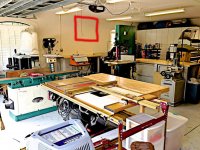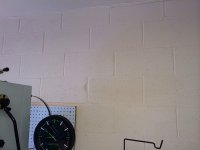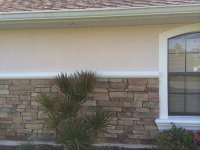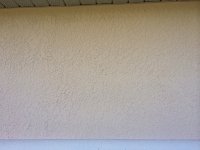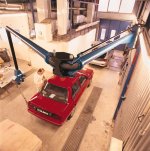SittingElf
Member
- Joined
- May 28, 2013
- Messages
- 1,371
OK, so I've decided that the ASA 5000 boom is in my future. I will purchase in Germany and have the military ship it with our household goods when my wife is reassigned to Georgia this summer.
Unlike you, I will add the energy and air unit to the arm and replace the receptacles with a single 220V and two 110V females. I'm expecting a total price of around $4900.
This will mitigate having to put 220V outlets all over my newly refurbed shop, which currently has NONE, and only three 110V outlets on the walls at the moment, though I WILL add a number of 110's on the walls and ceiling. With a 16.5Ft reach, I will be able to operate the various 220V machines in my shop, one by one, which is my intention. I WILL have a dedicated 220V outlet where my 3HP Cyclone will live, and I might put one on the wall where my Powermatic Lathe has just decided to reside. Other than that, I want to power my machines via the boom.
I have also considered attaching 6" duct to the boom arm, with a flex hose at the pivot point to allow for DC at the machines as I use them. (With reduction adapters to 5" and 4" where appropriate to the individual machines, and allowing for the smaller diameter DC hose for the CT36 to reside internally in the boom along with an air hose from my compressor.
I plan to mount to the far wall of my shop which can be seen in the pictures below. The boom will be at approximately 7' and the down pipe cut to a height to accommodate ease of use.
The big question is how to mount to the far wall to assure weight distribution and security. My thoughts are to sandwich the block wall with steel plates on both the outside and inside with bolts...allowing for load sharing over more square footage. Do you think this would work? I obviously would have to figure out a way to make the outside plate esthetically reasonable to please the HOA that I'm in, but that would probably not be a major issue.
I would be interested in your thoughts about whether this is an effective solution, or would I need to reconsider the installation. You are the only person that I know of that has the 5000 in the USA, and I think it will work incredibly well for me as well, as long as I can mount it safely and securely.
Looking forward to your input.
Frank
The red area is where I want to install the boom. (Note: This is an old picture of my workshop. MUCH has changed and most of the machines in this pic are now sold and replaced)
[attachimg=#1]
This is a closeup of the type of wall inside the shop. As far as I know, there is no concrete fill within the blocks.
[attachimg=#2]
This is the outside wall. The overhang matches the ceiling in the shop.
[attachimg=#3]
This is a closeup of the area where I would install an outside steel plate to sandwich with an internal one. Do I need length or width for the plate?
[attachimg=#4]
Tough questions, but one way or the other, I want the 5000 in my shop! [drooling]
Unlike you, I will add the energy and air unit to the arm and replace the receptacles with a single 220V and two 110V females. I'm expecting a total price of around $4900.
This will mitigate having to put 220V outlets all over my newly refurbed shop, which currently has NONE, and only three 110V outlets on the walls at the moment, though I WILL add a number of 110's on the walls and ceiling. With a 16.5Ft reach, I will be able to operate the various 220V machines in my shop, one by one, which is my intention. I WILL have a dedicated 220V outlet where my 3HP Cyclone will live, and I might put one on the wall where my Powermatic Lathe has just decided to reside. Other than that, I want to power my machines via the boom.
I have also considered attaching 6" duct to the boom arm, with a flex hose at the pivot point to allow for DC at the machines as I use them. (With reduction adapters to 5" and 4" where appropriate to the individual machines, and allowing for the smaller diameter DC hose for the CT36 to reside internally in the boom along with an air hose from my compressor.
I plan to mount to the far wall of my shop which can be seen in the pictures below. The boom will be at approximately 7' and the down pipe cut to a height to accommodate ease of use.
The big question is how to mount to the far wall to assure weight distribution and security. My thoughts are to sandwich the block wall with steel plates on both the outside and inside with bolts...allowing for load sharing over more square footage. Do you think this would work? I obviously would have to figure out a way to make the outside plate esthetically reasonable to please the HOA that I'm in, but that would probably not be a major issue.
I would be interested in your thoughts about whether this is an effective solution, or would I need to reconsider the installation. You are the only person that I know of that has the 5000 in the USA, and I think it will work incredibly well for me as well, as long as I can mount it safely and securely.
Looking forward to your input.
Frank
The red area is where I want to install the boom. (Note: This is an old picture of my workshop. MUCH has changed and most of the machines in this pic are now sold and replaced)
[attachimg=#1]
This is a closeup of the type of wall inside the shop. As far as I know, there is no concrete fill within the blocks.
[attachimg=#2]
This is the outside wall. The overhang matches the ceiling in the shop.
[attachimg=#3]
This is a closeup of the area where I would install an outside steel plate to sandwich with an internal one. Do I need length or width for the plate?
[attachimg=#4]
Tough questions, but one way or the other, I want the 5000 in my shop! [drooling]

